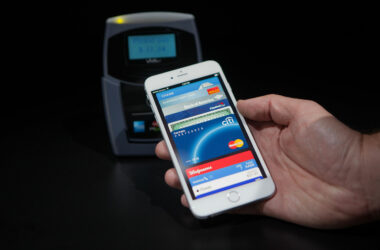I got in a brief discussion with the famous Startup L. Jackson on Twitter the other day. The thread started with a comment from me:
@StartupLJackson Mobile is even more winner-take-all than web.
— Allen Cheung (@allenmhc) August 13, 2015
We went a bit back and forth on the characteristics of mobile products vs. web products.
After thinking about it a bit more, I agree with SLJ that there’s no strong evidence that suggest fewer products in the mobile space, in comparison to the web space when it was the dominant platform. Rather, I think what I meant to say – and this is where the 140 character limit is a hinderance – is that each user will only use a handful of mobile apps, and have no need for multiple apps with overlapping functionality.
This thesis is borne out of the surveys that suggest only a handful of mobile apps ever get repeated usage. Though it sounds counterintuitive at first, the thesis is reasonable upon further reflection: just because our phones can run thousands of apps does not mean that we use all of them equally. I suspect that this computing pattern would hold true for desktop apps and likely websites as well.
And when there isn’t really daily use in for hundreds of app, it follows that most apps aren’t being downloaded either. Beyond well-documented issues of app discovery, getting users to download software is tough: the magic number seems to hover around two dozen apps installed per phone. There isn’t much room on a phone for duplicative and competing apps that do mostly the same things.
Contrast the app world with the web world, where the mighty Google search levels the playing field a bit more, and websites are downloaded and run with a lot less ceremony. Although moderns sites transfer megabytes of data to render their text, plus banner ads and tracking pixels and high-res. images, their URLs – that backbone of the web – provides a universal level of accessibility.
I’ve noticed that my own usage patterns follow this rule of singular apps. When I’m curious about a house on sale, googling on the desktop brings me to one of several real estate sites (Zillow, Redfin, Movoto, Trulia), and possibly the site for the property as well. On the phone, I just have the Redfin app installed; it has become the only service I use when the laptop is unavailable. Similarly, while there are a dozen news and commentary blogs I follow, using a single aggregator like Flipboard makes more sense than installing a dozen separate news apps1.
The gaping hole in this theory is the prevalence of multiple messaging apps. Somehow, messaging is the one genre that has multiple thriving services. I suspect it’s the exception both because the market is enormous (basically all smartphone users) and because the network effects are so strong. On top of that, there are distinct cultural norms in communication, and apps in different parts of the world cater to how the locals talk to one another. Wechat’s voice messages work well in China where noise is tolerated and character input remains difficult, whereas Line has capitalized on the train-riding lifestyle of Japanese workers by integrating with mobile games.
All this said, the apparent exclusivity of services on specific phones probably doesn’t matter. The mobile market is so huge, with so many new users of technology, that it can likely sustain multiple major products in each category, each with millions of active users.
That said, I find myself using news readers like link repositories, where I’ll prefer to open and read the webview’ed version over the reformatted in-app article.↩

